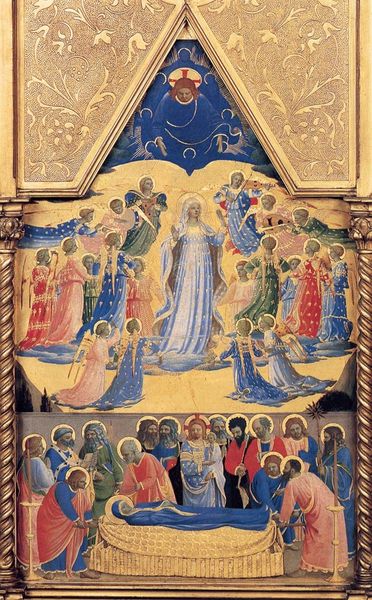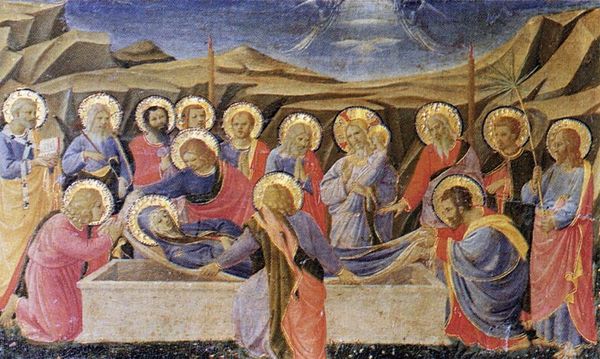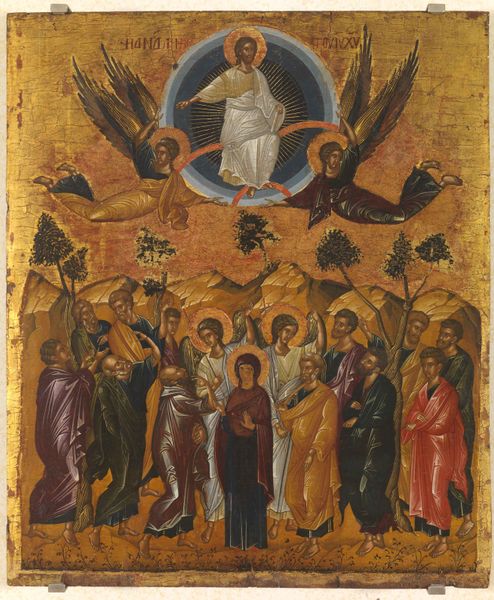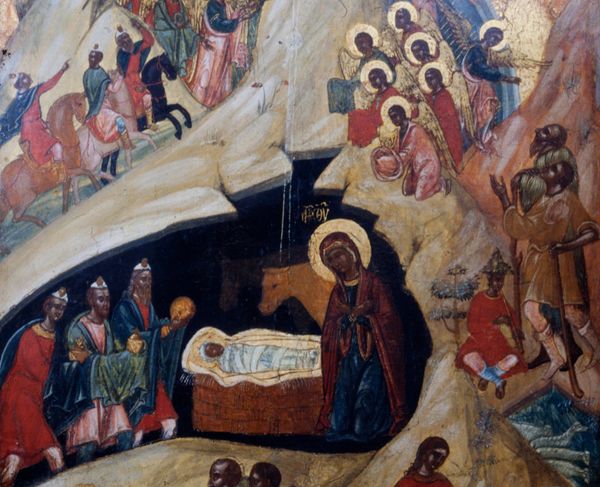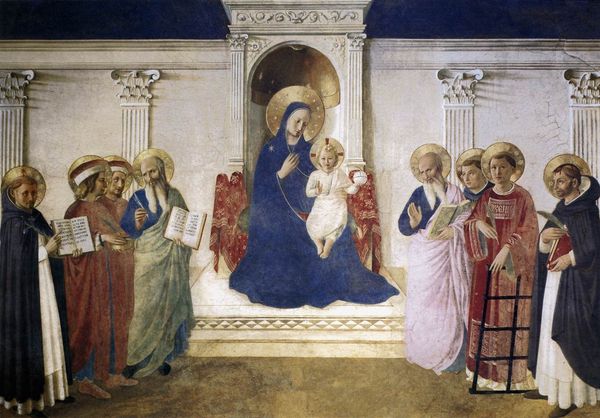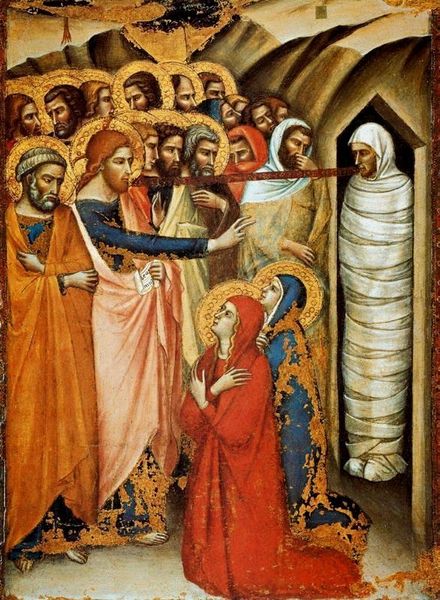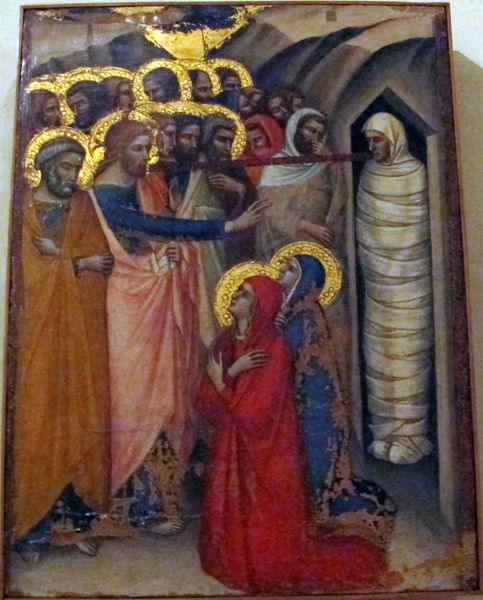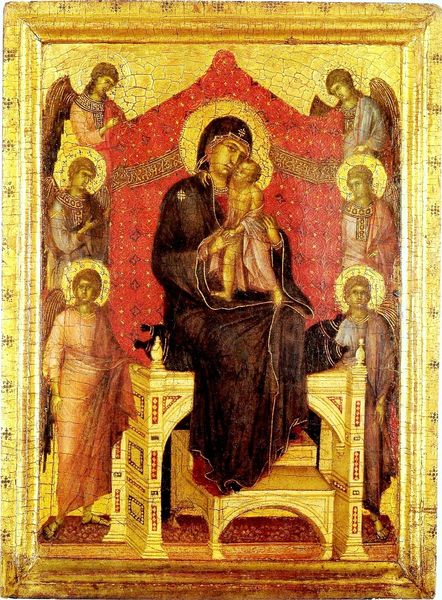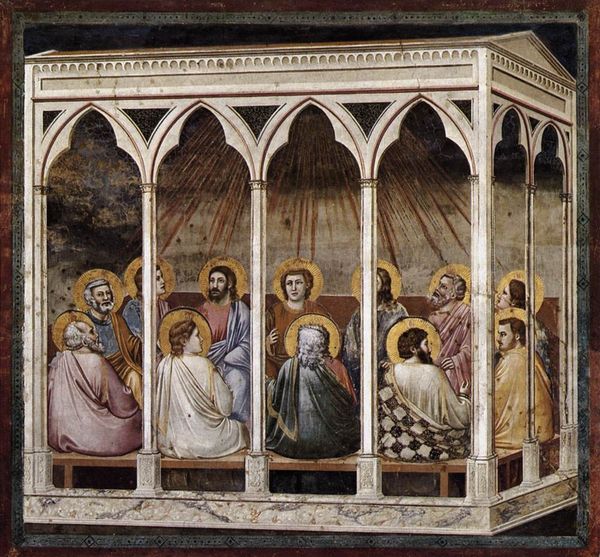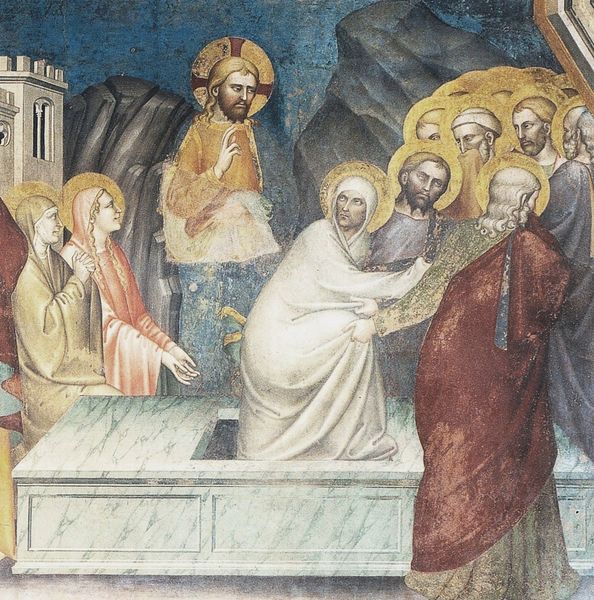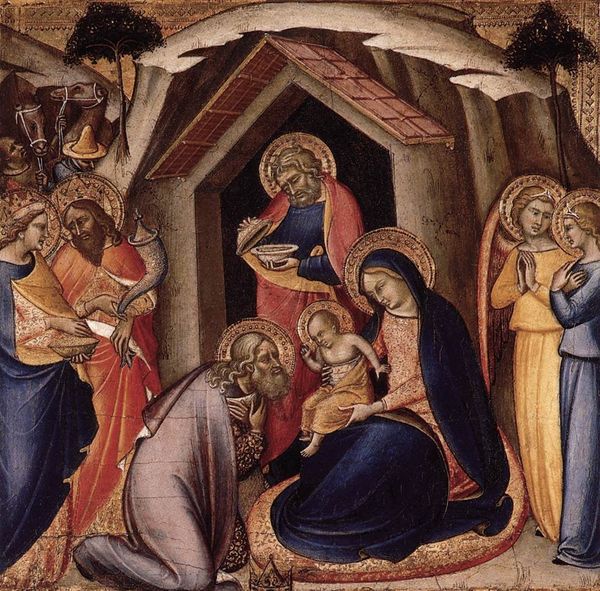
tempera, painting, fresco
#
high-renaissance
#
tempera
#
painting
#
prophet
#
gothic
#
holy-places
#
figuration
#
fresco
#
oil painting
#
jesus-christ
#
arch
#
christianity
#
history-painting
#
italian-renaissance
#
angel
#
christ
Copyright: Public domain
Editor: Here we have Giotto’s fresco, *The Ascension*, created around 1305, part of the Scrovegni Chapel. I'm struck by the contrast between the earthly figures below and the floating Christ and angels above, this division and separation in its visual structure seems important... What’s your interpretation of this piece? Curator: Giotto was painting during a period of massive social and religious upheaval. Think about it: the church's power was absolute, yet there were already whispers of dissent. So how does Giotto use the visual language of the time to perhaps subtly question the established hierarchy? Note the solid earthly figures – aren't they, in a way, more compelling, more human than the ethereal Christ? Editor: That's an interesting perspective. I’d assumed that by using earthly, realistic-looking figures, he’s trying to make the scene relatable and highlight Christ's importance. Curator: But for whom? Remember the Scrovegni Chapel was a private chapel commissioned by a wealthy family, the Scrovegni. Were they commissioning divine imagery out of devotion or self-aggrandizement and seeking to normalize power structures? By making these holy figures accessible, isn’t Giotto inviting a more personal, less mediated relationship with the divine, subtly undermining the Church's exclusive claim to spiritual authority? Editor: So, the focus isn't solely on the biblical story itself but on the complex social dynamics within which it was created and its potential challenge to the prevailing social order. Curator: Precisely! We must view the painting as more than just religious art. It's a historical document reflecting the power struggles of the time. Editor: That definitely changes how I see it, giving agency to both Giotto and the people viewing it at the time, creating art that reflects the issues that people were concerned with, then as now.
Comments
No comments
Be the first to comment and join the conversation on the ultimate creative platform.
